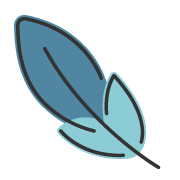Why do magnets attract metal?
2024-11-20
Once upon a time, in a land made of sparkling sand and shimmering seashells, lived tiny, invisible creatures called Magnetos. These Magnetos weren't like any other creatures you've ever heard of. They were incredibly tiny, smaller even than the tiniest speck of dust, and they lived inside certain kinds of metal. Think of it like this: every little piece of metal, like your shiny red toy car, is a whole city filled with millions and millions of Magnetos!
These Magnetos were very, very energetic. They were always zipping and zooming around, bouncing off each other like tiny, excited balls. But here's the special thing about them: every Magneto had a little north pole and a little south pole, just like the Earth itself!
Now, north poles and south poles are best friends. They love to snuggle up together! If a north pole from one Magneto meets a south pole from another, they pull towards each other with a powerful hug – SNAP! – they’re stuck together!
But, here's the twist: north poles and north poles don’t like each other very much. They push each other away! Same goes for south poles and south poles; they also push each other away! It's like having two bouncy balls that are always trying to get as far away from each other as possible.
So, imagine what happens inside a piece of metal. Millions of Magnetos are zipping around, some with north poles facing one way, some with south poles facing the other. It’s a bit of a chaotic dance! Most of the time, the Magnetos are all jumbled up and pointing in different directions, so their pushes and pulls cancel each other out. That’s why most pieces of metal don't seem to have any special powers.
But sometimes, something amazing happens! Let’s say you have a special kind of metal, a metal that's been treated in a special way, like the metal in your strong magnet. In this metal, many of the Magnetos are lined up neatly, all their north poles pointing in one direction, and all their south poles pointing in the opposite direction. It’s like suddenly all those bouncy balls are marching in formation!
Now, this organized army of Magnetos is incredibly strong! Because all the north poles are pointing one way and all the south poles are pointing the other way, their forces add up. This makes a strong pull – that's what we call a magnet!
So, when you bring a magnet close to another piece of metal, it's like bringing a well-organized army of Magnetos close to a jumbled crowd of Magnetos.
The magnet's well-organized Magnetos, all neatly lined up, start to influence the other Magnetos. The south poles in the magnet pull on the north poles in the metal, and the north poles in the magnet pull on the south poles in the metal.
The Magnetos in the metal, which were all jumbled up before, start to line up, too, trying to get close to their magnetic friends. It's like a magical dance! As more and more Magnetos line up, the pull gets stronger and stronger. SNAP! – the metal is attracted to the magnet!
That's why magnets attract some metals. The magnet's organized Magnetos exert a strong force on the Magnetos in the metal, making them line up and causing the metal to be pulled towards the magnet.
But what happens if you try to stick two magnets together with the same poles facing each other? Remember, north poles push away from other north poles, and south poles push away from other south poles. So, the magnets will push each other away! It's like the two organized armies are fighting each other instead of dancing!
So next time you play with a magnet and see it sticking to your metal toy car, remember the busy little Magnetos inside, dancing and marching, and working together to create this amazing force of attraction! They are so tiny you can't see them, but their powerful pull is something you can definitely feel! Isn't that amazing? And remember, only certain metals have these busy Magnetos inside, so not everything will stick to a magnet! You can experiment and discover which ones do!
This is a story about the hidden world of tiny, powerful Magnetos, and how their dance and marching create the amazing power of magnets. Remember, it's all about north poles and south poles, and how they love to snuggle together but push each other away!
